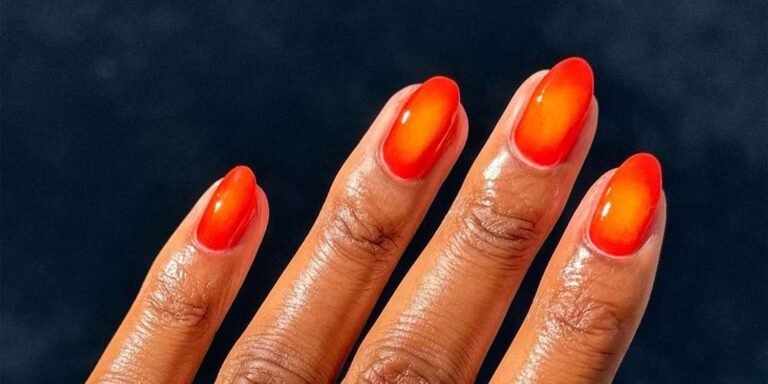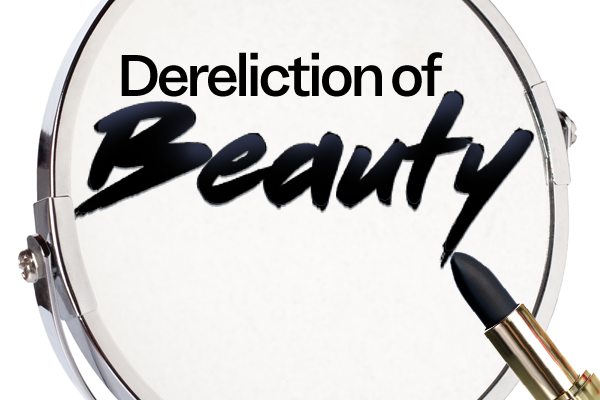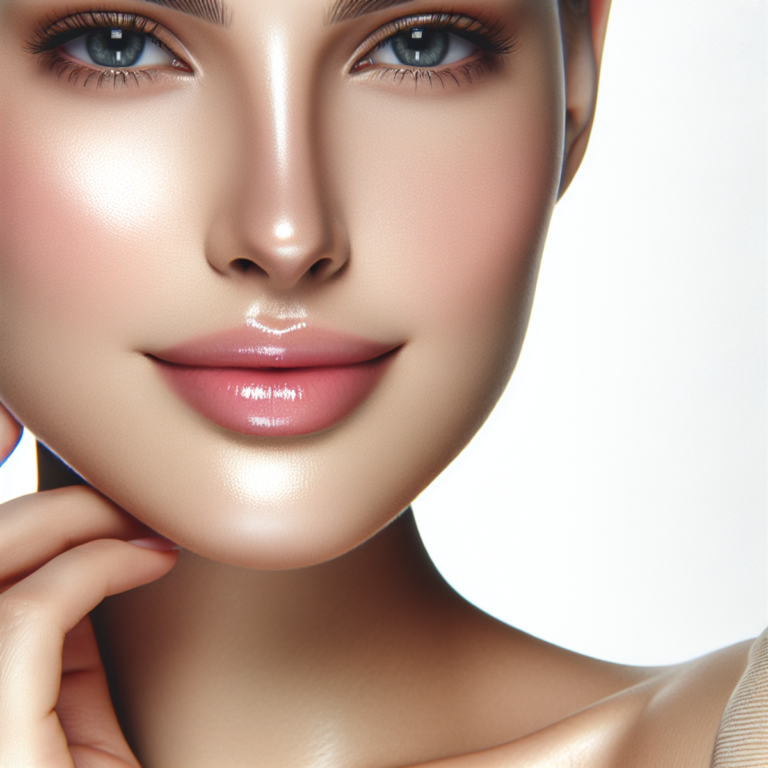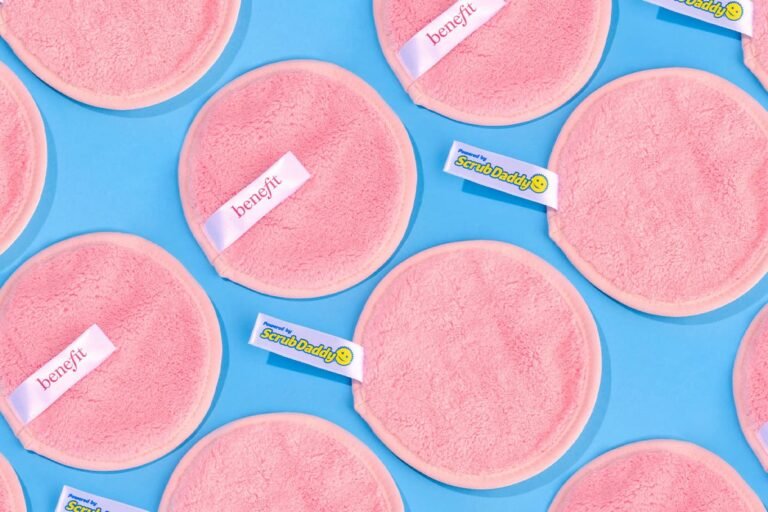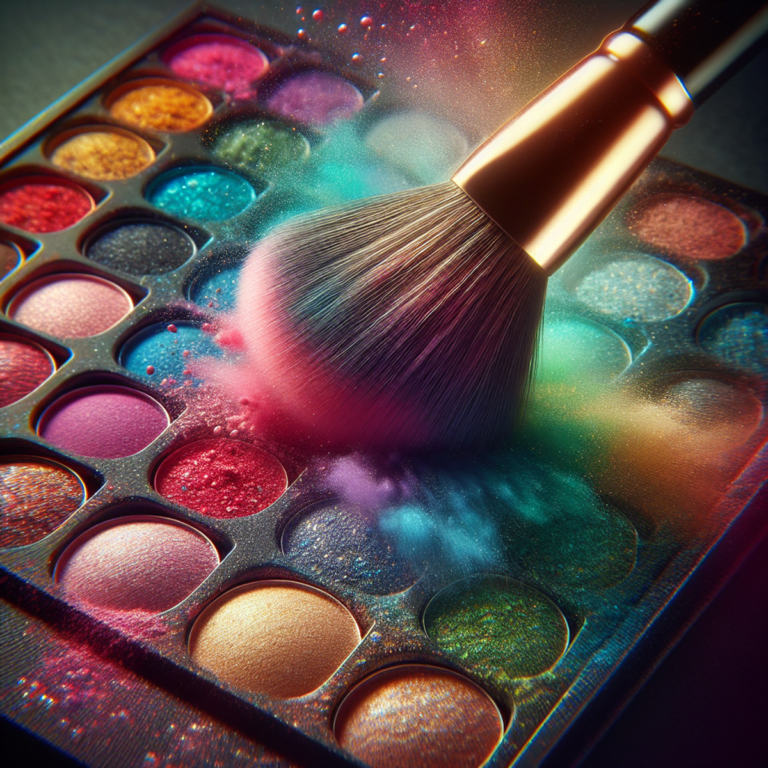How Prevent and Get Rid of Nail Stains, According to an Expert

Introduction
Maintaining clean and healthy nails is not only important for personal hygiene but also plays a significant role in the overall appearance of our hands. Nail stains are a common concern that many people face, and they can negatively impact the way our hands look and feel. In this article, we will share expert tips on how to prevent and effectively remove nail stains.
Clean and healthy nails contribute to a polished and put-together look. When our nails are stained, it can make us feel self-conscious and less confident in our appearance. Nail stains can occur due to various reasons such as exposure to chemicals, smoking, or underlying health conditions. Understanding the causes behind nail stains is essential in implementing the right prevention and treatment methods.
In the upcoming sections, we will explore different techniques to prevent nail stains from occurring in the first place:
- Maintaining Good Nail Hygiene: Learn how to properly care for your nails and keep them clean.
- Protecting Your Nails: Discover ways to shield your nails from external factors that can cause stains.
- Avoiding Staining Habits and Products: Identify common habits and products that may be staining your nails.
We will also discuss effective treatment methods for removing nail stains, including natural remedies, over-the-counter options, and seeking professional advice when necessary.
By following these expert tips, you will be equipped with the knowledge and tools to prevent nail stains and effectively get rid of any existing stains. So let’s dive in and discover how you can maintain clean and beautiful nails effortlessly!
Understanding Nail Stains
When it comes to understanding nail stains, it’s essential to recognize the different types and their potential causes. Nail stains can manifest in various forms, each with its distinct characteristics and underlying reasons:
- Yellowing: Yellow nails are a common concern and can result from several factors, including fungal infections, excessive use of nail polish, or aging. Additionally, tobacco use and certain medical conditions can contribute to this discoloration.
- Discoloration: Discolored nails may appear white, green, or brownish, indicating potential issues such as trauma or underlying health conditions. Fungal infections, psoriasis, or reactions to nail products can also lead to nail discoloration.
- Dark Spots: Dark spots on the nails might be attributed to melanonychia, a condition caused by the increased production of melanin. In some cases, these spots may signify a benign mole or a more serious concern that requires medical attention.
Understanding the characteristics and potential causes of these nail stains is crucial for identifying appropriate prevention and treatment methods. By recognizing the underlying reasons for nail discoloration, individuals can take proactive steps to maintain healthy nails and seek suitable remedies when needed.
The connection between understanding the nature of nail stains and implementing effective prevention and treatment methods is clear. By being aware of the specific type of nail stain and its potential causes, individuals can tailor their approach to safeguarding their nail health effectively. This knowledge empowers them to make informed choices regarding hygiene practices, product usage, and seeking professional guidance when necessary.
Part 1: Prevention Techniques
When it comes to maintaining clean and healthy nails, prevention is key. By implementing the right nail care practices and protective measures, you can effectively prevent nail stains from forming. Here are some tips to help you prevent nail stains:
1. Maintain Good Nail Hygiene
To prevent stain formation on the surface of your nails, it is essential to keep them clean and dry. Here are some specific tips for maintaining proper nail hygiene:
- Regularly wash your hands and nails with a mild soap and lukewarm water. This will help remove dirt, oils, and bacteria that can contribute to staining.
- Use a soft-bristled brush or a nail cleaning tool to gently scrub the surface of your nails, especially if you have been exposed to dirt or other substances that could cause stains.
- After washing your hands or doing any activity that involves getting your nails wet, make sure to thoroughly dry them. Moisture can lead to the growth of bacteria or fungi, which can cause discoloration.
It’s important to note that while cleaning your nails, it’s best to use gentle cleansers and avoid harsh chemicals. Harsh soaps or nail polish removers containing acetone can strip away natural oils from your nails and make them more prone to staining.
2. Protect Your Nails from External Factors
Protecting your nails from external factors can go a long way in preventing nail stains. Here are some protective measures you can take:
- Wear gloves while engaging in activities that may expose your nails to dirt, chemicals, or excessive moisture. This includes tasks such as gardening, cleaning with harsh chemicals, or doing dishes without gloves.
- Apply a broad-spectrum sunscreen to protect your nails from harmful UV radiation. Just like how sun exposure can cause skin discoloration, it can also lead to nail discoloration. So remember to apply sunscreen on your hands and nails when spending time outdoors.
3. Avoid Habits and Products that Cause Stains
Certain habits and products can contribute to the formation of nail stains. By avoiding them, you can minimize the risk of staining. Here are some tips:
- Quit smoking or using tobacco products. Smoking can cause yellowing of the nails, so seeking help in quitting these habits is not only beneficial for your overall health but also for the appearance of your nails.
- When choosing nail polish colors, opt for lighter shades or use a protective base coat before applying dark colors. Dark-colored nail polish, especially if applied directly to bare nails, can stain them over time.
- Be cautious when using hair dyes or other products that contain strong pigments. These products can sometimes transfer onto your nails and cause discoloration.
By following these prevention techniques and incorporating them into your nail care routine, you can significantly reduce the likelihood of developing nail stains. However, it’s important to note that prevention alone may not always be sufficient, as some factors like underlying health conditions or environmental factors could still contribute to staining.
2. Protect Your Nails from External Factors
Proper nail care involves taking protective measures to prevent nail stains and maintain their overall health. In this section, we will discuss some important tips on how to protect your nails from external factors that can lead to staining.
Wear Gloves
One of the best ways to prevent nail stains is by wearing gloves while engaging in activities that may expose the nails to dirt, chemicals, or excessive moisture. Whether you’re gardening, cleaning, or doing dishes, gloves act as a barrier between your nails and potential staining agents. They help minimize contact with harsh substances that can discolor your nails.
Use Sunscreen for Nails
Many people are unaware that UV radiation can also cause nail discoloration. To protect your nails from the harmful effects of the sun, it’s important to apply a broad-spectrum sunscreen specifically designed for nails. This helps prevent yellowing and other forms of discoloration caused by prolonged sun exposure.
Keep Nails Dry
Excessive moisture can weaken the structure of your nails and make them more prone to staining. After washing your hands or being in contact with water for an extended period, make sure to thoroughly dry your nails. Moisture trapped under the nails can lead to bacterial growth and eventually result in unsightly stains.
Avoid Extended Submersion
While it’s important to keep your hands clean, avoid prolonged immersion in water. Extended exposure to water can soften the nails and make them more susceptible to damage and staining. If you frequently engage in activities like swimming or soaking in hot tubs, consider using waterproof gloves or applying a protective layer of clear nail polish beforehand.
Moisturize Regularly
Hydrated nails are less likely to become brittle and develop stains. Make it a habit to moisturize your hands and cuticles daily with a nourishing hand cream or cuticle oil. This helps maintain the natural moisture balance of your nails and prevents them from drying out.
By implementing these protective measures, you can significantly reduce the risk of nail stains caused by external factors. Remember that prevention is key to maintaining clean and healthy nails.
3. Avoid Habits and Products that Cause Stains
Preventing nail stains is an essential part of nail care. By taking protective measures and implementing proper nail care routines, you can maintain the natural beauty of your nails. Here are some tips to help you avoid habits and products that cause stains:
1. Understand the Impact of Smoking on Nail Discoloration
Smoking not only affects your overall health but also has a detrimental effect on the appearance of your nails. The nicotine and tar present in cigarettes can lead to yellowing and discoloration of the nails. If you’re struggling with this habit, it’s important to seek help in quitting for both your health and the health of your nails.
2. Choose Lighter Nail Polish Shades or Apply a Protective Base Coat
Dark-colored nail polish can leave behind stubborn stains, especially when used without a protective base coat. To prevent staining, consider these options:
- Opt for lighter shades of nail polish
- Apply a clear base coat before using darker colors
A base coat creates a barrier between your nails and the pigments in the polish, reducing the risk of staining.
Even light-colored polishes can cause staining if left on for an extended period. Therefore, it’s advisable to give your nails a break from polish periodically to allow them to breathe.
Remember, prevention is key when it comes to avoiding nail stains. By making conscious choices in your nail care routine and being mindful of potential stain-causing habits, you can keep your nails looking clean and beautiful.
In summary, to prevent nail stains:
- Understand the impact of smoking on nail appearance.
- Consider seeking help in quitting if you are a smoker.
- Choose lighter shades of nail polish or apply a protective base coat before using darker colors.
- Give your nails breaks from polish periodically to allow them to recover.
By implementing these preventative measures, you can significantly reduce the risk of nail stains and maintain the overall health and appearance of your nails.
Part 2: Treatment Methods for Nail Stains
1. Trying Natural Remedies
Lemon Juice for Nail Stains
Lemon juice is a popular natural remedy for treating mild nail stains. The citric acid in lemon juice acts as a natural bleaching agent, helping to lighten the discoloration on the nails. To use this method, you can soak your nails in a bowl of freshly squeezed lemon juice for a few minutes. Alternatively, you can gently rub a lemon wedge directly onto the stained nails. After application, it’s essential to rinse your hands thoroughly and apply moisturizer to prevent dryness.
Baking Soda for Nail Stains
Baking soda is known for its gentle exfoliating properties, making it an effective ingredient for removing surface discoloration on the nails. You can create a paste by mixing baking soda with water to form a scrub. Gently massage the paste onto the nails, focusing on areas with stains. After a few minutes, rinse off the paste and pat your nails dry. This simple DIY scrub can help diminish the appearance of nail stains over time.
By utilizing these natural remedies, you can take proactive steps to address mild nail stains at home without harsh chemicals or expensive treatments. Remember that consistency is key when using natural remedies, as it may take some time to observe visible improvements in nail discoloration.
2. Over-the-Counter Options
When it comes to treating nail stains, there are several over-the-counter options available in the market. These products are specifically formulated to help lighten and remove stains from the nails. Here are some key points to consider when exploring these options:
Commercial Nail Stain Removers
There are various nail stain removers available that are designed to target different types of stains. These products often contain ingredients like hydrogen peroxide or lemon juice, which work as bleaching agents to fade the discoloration. When choosing a commercial nail stain remover, consider the following tips:
- Look for products with natural ingredients like lemon juice or tea tree oil, as they tend to be gentler on the nails.
- Read reviews and check for customer feedback to ensure the product is effective and safe to use.
- Follow the instructions provided by the manufacturer for optimal results.
Whitening Toothpaste
Using whitening toothpaste as a DIY remedy for nail stains has gained popularity among some individuals. The idea behind this hack is that the whitening properties in toothpaste can help lighten the discoloration on nails. However, it’s important to note that this method may not be suitable for everyone and can have potential risks:
- Whitening toothpaste contains abrasive ingredients that can be harsh on the nails and cuticles.
- Some toothpaste formulas may contain chemicals that could cause further damage or irritation to the nails.
- It’s recommended to do a patch test on a small area of your nail before applying toothpaste to all your nails.
It’s crucial to remember that not all remedies or products work the same way for everyone. What may work for one person might not provide the same results for another. Additionally, it’s essential to exercise caution when using any DIY remedies or over-the-counter products and discontinue use if you experience any adverse reactions.
By exploring these over-the-counter options, you can find a suitable solution to address your nail stain concerns. However, if the stains persist or if you have severe discoloration that doesn’t respond to these treatments, it may be necessary to seek professional advice from a dermatologist or a professional manicurist who can provide specialized treatment options tailored to your specific needs.
Remember, prevention is always better than cure when it comes to nail stains. In the next section, we will discuss some effective prevention techniques that can help you maintain clean and healthy nails.
3. Seeking Professional Advice
When to Seek Professional Help
It’s essential to recognize when home remedies and over-the-counter products may not be sufficient in addressing persistent or severe nail stains. Consider seeking professional advice under the following circumstances:
- Persistent Stains: If home remedies and DIY treatments fail to show significant improvement after consistent use over several weeks, consulting a dermatologist or manicurist is advisable. They can conduct a thorough assessment to identify the root cause of the persistent stains, which may include potential infections, nutritional deficiencies, or systemic disorders contributing to the discoloration.
- Severe Discoloration: When the nails exhibit deep discoloration, dark spots, or unusual changes in texture, it’s crucial to seek professional evaluation. These could be signs of underlying health concerns that require expert attention. In such cases, visiting a dermatologist would be beneficial as they specialize in diagnosing and treating various skin and nail conditions.
Role of Dermatologists and Manicurists
Dermatologists and manicurists play distinct yet complementary roles in addressing nail stain issues.
- Dermatologist: A dermatologist specializes in diagnosing and treating various skin and nail conditions. When visiting a dermatologist for nail stains, they can perform tests to identify potential infections, nutritional deficiencies, or systemic disorders contributing to the discoloration by examining the nail matrix. Based on their findings, they may recommend medical-grade treatments or lifestyle adjustments to target the underlying cause of the stains.
- Manicurist: Professional manicurists are skilled in assessing nail health and providing cosmetic treatments. While they may not diagnose medical conditions, they can offer valuable insights into effective stain removal techniques and preventive measures. A manicurist can recommend suitable nail care products and personalized routines to minimize future discoloration, such as suggesting ways to reduce artificial nail damage.
By understanding the pivotal role of these experts, individuals can make informed decisions about when to transition from self-care approaches to seeking specialized assistance for stubborn nail stains.
Maintaining Overall Nail Health
While preventing and treating nail stains is important, it’s crucial to prioritize long-term nail health for everyone. Here are some ways to maintain healthy nails:
- Eat a balanced diet: Nourish your nails from within by including essential nutrients like biotin, vitamin E, and iron in your meals.
- Moisturize regularly: Use moisturizers or cuticle oils to keep your nails hydrated and flexible, reducing the risk of brittleness and breakage.
Conclusion
Implement the expert tips shared in the article to prevent and get rid of nail stains effectively. With consistent care and attention, anyone can achieve clean and beautiful nails free from unsightly stains.


